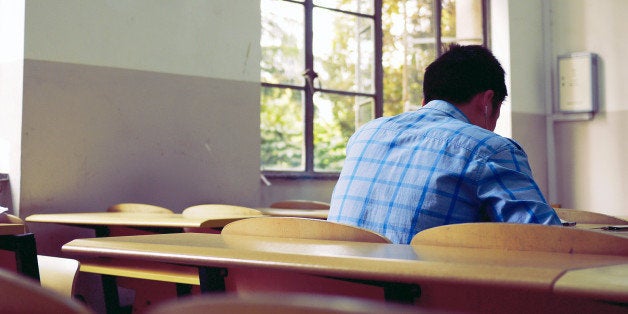
During the 1940s, at least three public universities expelled students and fired faculty who were presumed to be homosexual. The cases at Texas, Wisconsin, and Missouri open a window onto a little known aspect of the history of higher education in the United States. Although we know in a general way that homosexuals were discriminated against during the 1940s, there is scant documentation about the treatment of homosexuality on college campuses.
A paper on this topic that I co-authored with one of my former graduate students, Jennifer Silverman, was just published in the journal History of Education Quarterly. The paper, "'An Indelible Mark': Gay Purges in Higher Education in the 1940s," builds on a small amount of existing literature on the history of homosexuality and campus life.
The purges at the three universities we examined had much in common with a similar purge of gay men and lesbians from the State Department in Washington, D.C., a purge that is widely associated with McCarthyism. Much of what we know about this type of discrimination against gays and lesbians is about the McCarthy era. However, the State Department purge, and the events at Texas, Wisconsin, and Missouri, preceded the rise of Senator McCarthy. While there are some historical works on this topic, none examine the immediate post-World War II period. Most studies of gay students or faculty look at the repression of the 1950s or the period after the Stonewall Riots in 1969.
The history of gays and lesbians on campuses, as either faculty or students, in the pre-McCarthy years has yet to be written. Our research is beginning to change that.
In our paper, we focus on incidents at three universities, although we believe similar incidents likely occurred at other universities at the time. Here are more details about the three cases the paper focuses on. (We used pseudonyms for some people to protect their privacy and the privacy of their families.)
- In 1944, the Texas Regents dismissed University of Texas President Homer Rainey. Rainey had previously been the subject of controversy: a champion of academic freedom, he opposed the Regents when they wanted to fire faculty for their political views and when the Regents wanted to censor literature assigned in English classes. The Regents wanted Rainey out. To further bolster the case against him, the Regents contended he had not taken swift or severe enough action against gays on campus. Rainey, who tried to protect faculty who held unpopular political views, did not try to protect students or faculty from being ousted because of accusations of homosexuality.
In some ways, these events from the 1940s mirror what is happening today. In the late 1940s, there was a movement toward greater acceptance of gays and lesbians after the publication of the Kinsey Report, which documented that homosexual activity was far more common than many people believed. But just as some people moved toward acceptance, others moved toward increasing severity. In many states, it was not until the late 1940s that sodomy became a felony rather than a misdemeanor.
Today, the legalization of gay marriage draws a lot of attention, but at the same time, in a majority of states there are no laws protecting LGBTQ people from discrimination in employment, public accommodations, housing, credit, or education. Same-sex couples might be able to marry, but still lose their jobs, or be evicted or expelled.
After the U.S. Supreme Court decision in the Obergefell case, many people asked why it was that public opinion had changed so quickly in favor of gay marriage. A parallel question is, why did the rapid punitive response to homosexuality happen in the mid-20th century? Why was hostility ratcheted up -- and codified -- then, in the wake of the more tolerant views that stemmed from the Kinsey Report? More research needs to be done to fully understand these shifts and processes, in the past and in the present.
The full article is available here:
http://onlinelibrary.wiley.com/doi/10.1111/hoeq.12135/abstract
Margaret A. Nash and Jennifer A. R. Silverman, "'An Indelible Mark': Gay Purges in Higher Education in the 1940s," History of Education Quarterly 55 (4) (Nov 2015), pp. 441-459.